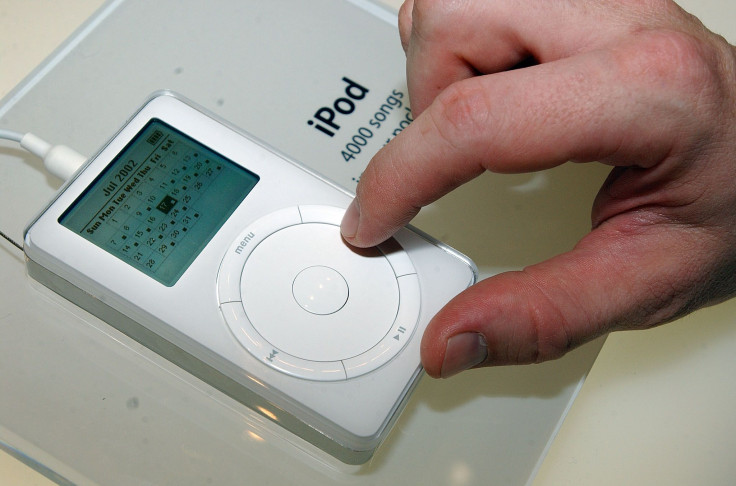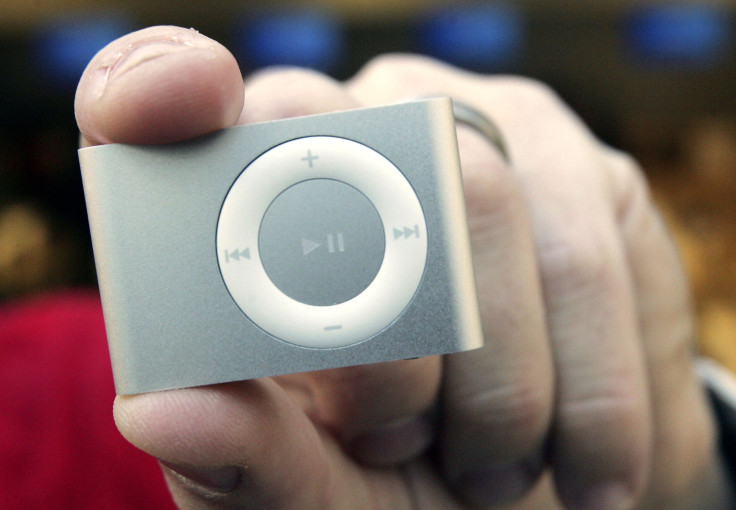National iPod Day 2016: Apple’s Iconic Device Over The Years

The first Apple iPod was unveiled by the company’s legendary founder Steve Jobs on Oct. 23, 2001. To recognize the importance of the iPod’s groundbreaking technology and the man behind its success, this day is celebrated as the National iPod Day.
Just as the iPod changed the way a person listens to music, the California-based technology giant has introduced a number of different variations of its “Classic,” Shuffle,” “Nano,” and “iPod Touch” — more and more models were released with each passing year. Here's a look at the game–changing iPod's history and its evolution.
2001
The first Apple iPod — 5GB hard-drive-based music player — was sold on Nov. 2001 for $399. Jobs was quoted telling the press, “To have your whole CD library with you at all times is a quantum leap when it comes to music. You can fit your whole music library in your pocket.”

2002
Apple comes up with a second iPod with an enhanced 10GB memory, priced at $499. Customers now also had the option to customize their devices by engraving two lines of text with up to 27 characters per line on the back of the iPod for $49.
Soon after, it released its new generation of iPods, with a maximum capacity of 20GB, that boasted of a touch pad instead of the earlier scroll wheel.
2004
The company released its business card-sized 4GB new iPod mini in a variety of colors — gold, blue, pink, and green anodized aluminum — for $249.

Apple then came up with a new generation of iPods to incorporate the “Click Wheel” interface that it had released with the mini.
2005
Apple introduced a flash-based iPod shuffle in 512MB ($99) and 1GB ($149) variants. It also pulled its earlier models a level up by introducing newer capacities for the mini and the iPod Photo, later ending the availability of monochrome-screen in its devices.

Later in the year, the company went on to end its tryst with the immensely popular mini in favor of the newly introduced iPod Nano —2GB and 4GB versions selling for $199 and $249 respectively.
2006
This year was significant for Apple as the company went for a major overhaul of its music players, bringing in second-generation shuffles and nanos. Apple also introduced a red 4GB nano, as part of the Project Red initiative to combat AIDS in Africa.

2007
Apple released its iconic iPhone in 2007 but the iPods did not take a back seat. While newer versions of the nano and shuffle were released, the introduction of the iPod Touch was a step in the right direction for the tech powerhouse.
2008
Along with the release of the iPhone 3G, this year also saw the fourth-generation iPod nano coming to stores.
2009
The 120GB iPod classic is replaced with the 160GB model, along with a much sleeker fifth-generation iPod nano.

2010
Multi-touch comes to the iPod nano with the sixth-generation model, which features the clip from the iPod shuffle but no video, speakers, or camera features. The fourth iteration of the iPod shuffle is also released along with the fourth-generation iPod touch — thinner and with two cameras.

The iPods nano and touch have seen further upgrades in the years that have followed to ensure that Apple remains competitive in the music sphere but majority of the company’s focus is now on its flagship iPhones. The phones come with built-in music players, eliminating the need for a separate device.
However, no one can take away from Steve Job’s genius in coming forward with the iPod, and this must be acknowledged on the National iPod Day.
© Copyright IBTimes 2024. All rights reserved.












